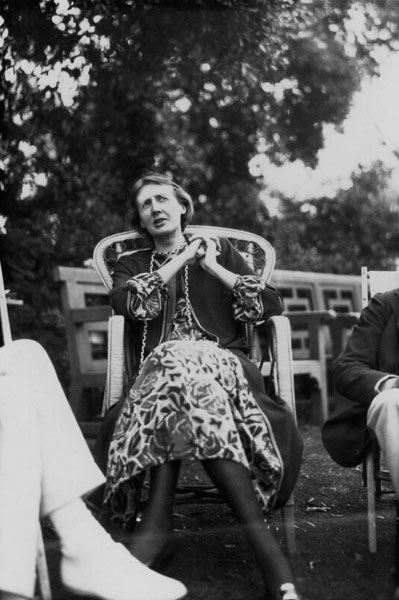photograph by Lady Ottoline Morrell (1926)
“Nature, who has played so many queer tricks upon us, making us so unequally of clay and diamonds, of rainbow and granite, and stuffed them into a case, often of the most incongruous, for the poet has a butcher’s face and the butcher a poet’s; nature, who delights in muddle and mystery, so that even now (the first of November, 1927) we know not why we go upstairs, or why we come down again, our most daily movements are like the passage of a ship on an unknown sea, and the sailors at the mast-head ask, pointing their glasses to the horizon: Is there land or is there none? to which, if we are prophets, we make answer “Yes”; if we are truthful we say “No”; nature, who has so much to answer for besides the perhaps unwieldy length of this sentence, has further complicated her task and added to our confusion by providing not only a perfect ragbag of odds and ends within us—a piece of a policeman’s trousers lying cheek by jowl with Queen Alexandra’s wedding veil—but has contrived that the whole assortment shall be lightly stitched together by a single thread. Memory is the seamstress, and a capricious one at that. Memory runs her needle in and out, up and down, hither and thither. We know not what comes next, or what follows after. Thus, the most ordinary movement in the world, such as sitting down at a table and pulling the inkstand towards one, may agitate a thousand odd, disconnected fragments, now bright, now dim, hanging and bobbing and dipping and flaunting, like the underlinen of a family of fourteen on a line in a gale of wind. Instead of being a single, downright, bluff piece of work of which no man need feel ashamed, our commonest deeds are set about with a fluttering and flickering of wings, a rising and falling of lights.”
― Orlando